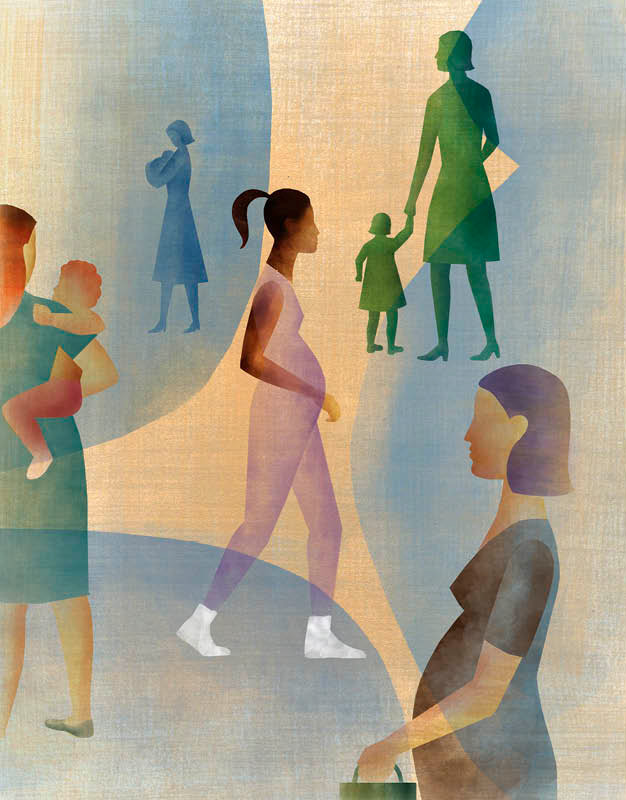Connecting the Dots

Illustration Sandra Dionisi
The US, in comparison to other “wealthy” countries, has a staggeringly high maternal mortality rate. A lot of effort has gone into trying to understand why people in America die from pregnancy-related deaths more often than in similar countries. Primary causes of maternal mortality include hemorrhage, mental health conditions, cardiomyopathy, cardiovascular and coronary conditions, embolism, and preeclampsia and eclampsia. If our country is going to lower its abysmal maternal mortality rate, we must use all options at our disposal.
Most recommendations for addressing maternal mortality focus on provider and hospital protocols, patient education, and lifestyle modifications, such as proper nutrition and exercise. But many of these recommendations do not acknowledge systemic barriers beyond the health care system.
In the state of Georgia, for example, one glaring issue is the lack of access to obstetric care in many counties, with 82 counties lacking even one OB/GYN. This scarcity forces pregnant individuals to travel long distances for essential care, posing financial and logistical challenges, particularly for those with low incomes, no transportation, or without paid sick leave.
While I have access to multiple options for obstetric care within a 15-minute drive from my home or workplace, many people in other parts of my state would have to drive more than half an hour to get to the doctor. Additionally, I have the type of job where if I need to go to a doctor’s appointment, I will still be paid for the day. In contrast, there are people who must choose between getting paid or driving over half an hour, one way, to go to the doctor. Even if they are experiencing symptoms that might be life threatening, they may prioritize work so as not to lose income. Not seeking proper or timely care may not be the result of a lack of education about risk factors, but instead the con- sequence of socioeconomic disparities that exist in so many communities.
These consequences can be exacerbated by the lack of access to affordable, nutritious foods. As chronic conditions like hypertension are a major contributor to maternal mortality in America, the link to diet cannot be ignored. All around the country are “food deserts,” where food options are scarce and usually consist of high-sodium, processed foods. Managing hypertension is difficult in places where there is a lack of fresh fruits and vegetables, and the main “grocery” store is a Dollar General or a convenience store at a gas station.
And even if they have access to healthy foods, some families are unable to afford the healthier food choices. Policies promoting access to fresh and nutritious food in underserved areas, along with policies that increase access to SNAP (Supplemental Nutrition Assistance Program) and TANF (Temporary Assistance for Needy Families) could make more nutritious foods, which often carry a higher price tag than less healthy, processed foods, more attainable for families in need, which can mitigate the impact of food scarcity on common causes of maternal death, like hypertension.
Ultimately, if I were to decide to have another child, my medical history of blood clots would give me significant pause. I, however, have several advantages at my disposal, such as nearby health care facilities, health insurance, paid sick leave, several choices of grocery stores for fresh foods, and the financial means to afford them.
Despite all of these advantages, there is no guarantee that, if I were to get pregnant, it would be uneventful. Even well-off celebrities like Serena Williams have had life-threatening issues during their pregnancies. Pregnancy is a time of anticipation, but also apprehension and anxiety. No expectant mother is 100–percent confident she and her baby will be fine.
But there is significant evidence that systemic inequalities and socioeconomic barriers are underlying contributing factors to maternal mortality. To truly address this urgent public health issue, policymakers like myself must adopt holistic approaches that address these systemic inequalities and empower all mothers to access the care and support they need to thrive.
Only then can we envision a future where maternal mortality rates in our country are no longer a cause for alarm, but a testament to our commitment to maternal health and well-being.
Email the Editor







